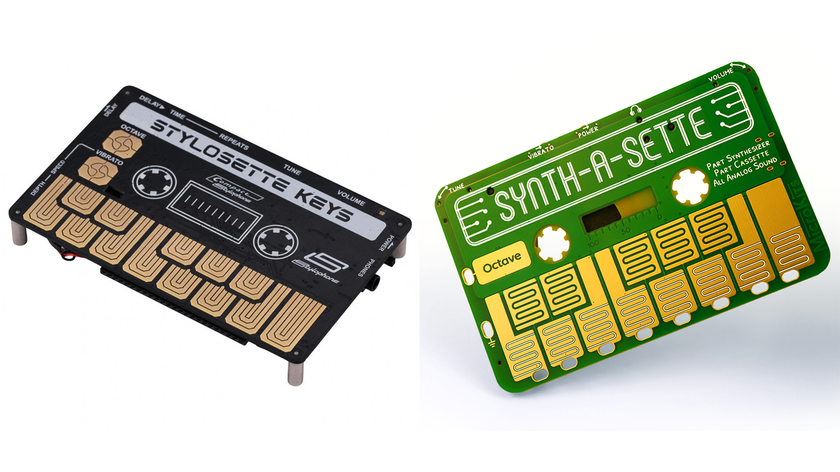Cut Copy: "If these old analogue synths get left alone for any length of time they get grumpy"
With its overt nod to climate change, Cut Copy’s sixth album Freeze, Melt is their most contemplative to date. Dan Whitford tells us how it was made...
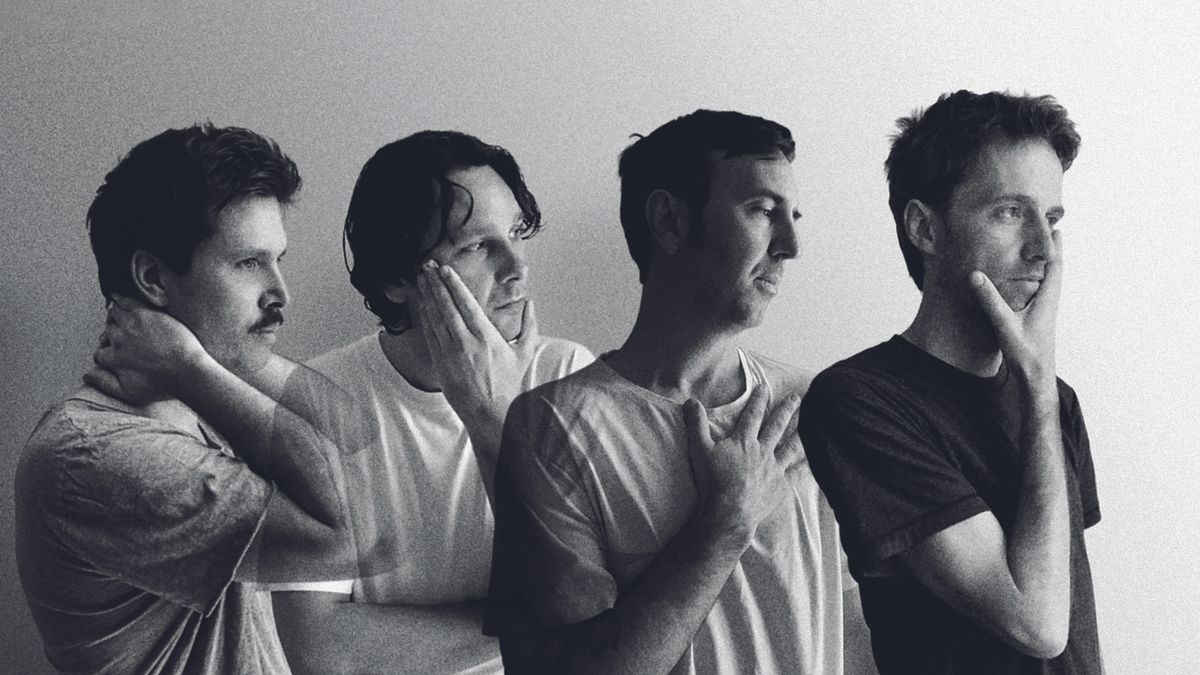
Hailing from Melbourne, Australia electro pop veterans Cut Copy were established almost 20 years ago by former graphic designer Dan Whitford.
The band’s debut album Bright like Neon Love (2004) flew under the radar, but the follow-up, In Ghost Colours (2008), truly signalled their intentions, hitting No. 1 in their homeland and attracting global critical acclaim.
The group took a more radical approach to their latest release, Freeze, Melt. Conceived by Whitford in Copenhagen, demos were file-shared to globally dispersed band members Tim Hoey (guitars), Ben Browning (bass), and Mitchell Scott (drums). The collective then regrouped at Melbourne’s Park Orchards Studios to complete the album.
Going full circle, Whitford and crew returned to Scandinavia and Christoffer Berg‘s Svenska Grammofon Studios in Gothenberg to mix. The result is a stripped-back, emotive and more electronic-oriented collection of songs, drenched in warm layers of monochromatic synths, ambient textures and Whitford’s mellow, reflective vocals.
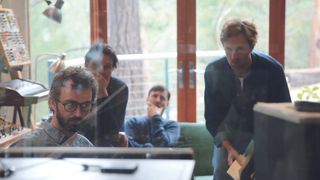
You’ve been compared to bands like Daft Punk, Fleetwood Mac or The Human League. Is that flattering or lazy?
Dan Whitford: “Both. I love all of those artists – they’re part of the cannon of electronic music, but in my mind we represent something a bit more than that. Journalists will often hear synths and an emotional chorus on a song and make the most obvious comparison, but our influences go a lot deeper. I started collecting records in the mid-to-late ’90s and my research crosses so many genres that a lot of different sounds infiltrate our music.”
The new album, Freeze, Melt was conceived in Copenhagen. Were you on a writing retreat?
Get the MusicRadar Newsletter
Want all the hottest music and gear news, reviews, deals, features and more, direct to your inbox? Sign up here.
“It was more of a lifestyle decision. Despite touring the world with the band, I’d lived in Melbourne all my life and wanted to be based somewhere else for a while. Europe’s appealing as you can jump on a plane and be in any number of countries within an hour and my girlfriend got a job in Copenhagen.
"I barely took any gear with me - just my laptop, a soundcard, microphone, MIDI keyboard and a guitar - but it wasn’t long before my electronic gear addiction kicked in and I was scouring the second-hand stores for things to make weird noises with. That was the beginning of me starting this album with a whole new palette of sounds.”
Does the title relate to the sub-zero conditions you were working in?
“Well yes, partly. Until I got to Copenhagen I didn’t realise that what we call seasons in Australia are just different shades of summer. It rains a lot, which was part of the connection to the album title but, thematically, it was more about the different emotional states I was feeling and our current effect on global warming.”
It’s certainly a more emotive and introspective album than we’ve heard from you before...
“The mood I was in definitely added a watermark to it. I was often riding my bike to the studio through sideways snow storms and stuff, so by the time I got to the studio I was more inclined to make something sparse, dark and minimal than breezy and summery.
"That definitely imprinted on the music a little, but also it’s about the stage our career is at as a band. We collectively felt that we wanted to try something slightly different. While working on the demos, there was a sense that some of the sounds were heading in a colder, more synthetic direction, which was something we were keen to lean into and push as far as we could.”
How did that work with you being separated from the rest of the band?
“Thankfully, in the age we’re living in, bands can manage to stay together and make albums despite living on different sides of the world, so it was necessary to file-share in order to complete anything. It was probably the first time we’d made an album that way until it got to a point where we needed to get in a room together to complete it.”
Does the album’s simplicity reflect that experience of lasering in on what’s important?
“I hope that we now have the know-how to do that. I’ve come at music with no formal training; I taught myself by listening to records and joining the dots. In fact, none of us had really played in bands before. We’ve been making it up as we go along, but if you throw enough things at the wall eventually some things will stick and that’s often how our albums have been made.
"On this album, instead of adding and adding until something worked, we found we were subtracting until we were left with the bare bones of what makes a song. Having not done that before, it suddenly felt a lot more interesting to us.”
You seem to have added some nice vintage hardware synths to your Melbourne setup?
“The studio in Copenhagen was more bare bones; the new one is a combination of that and my previous studio in Melbourne.
"Since day dot I’ve always been a massive fan of polysynths because I feel they give you so much more scope to make interesting sounds and textures. I’ve always managed to find people offloading old gear at various times, and initially got the Prophet-5 and Roland Jupiter-8. Soon after, I tracked down a Yamaha CS-80 from this old synth collector guy in Italy and managed to convince him to ship it to Australia.”
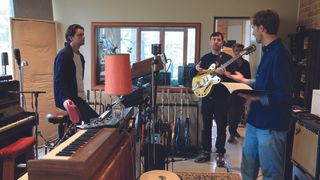
So how much does it cost to post a Yamaha CS-80 from Europe to Australia?
[Laughs] “It’s about 100kgs, so it had to go on a pallet in a shipping container and travel that way. It actually wasn’t as expensive as I thought - maybe a couple of grand, but I paid a pittance for the CS-80 in hindsight. At the time, it cost about €3,500 but it’s probably worth €20,000 now.
"If these old analogue synths get left alone for any length of time they do get grumpy. It’s like having a vintage car, you’ve got to be using it and if something goes wrong it’s expensive to get replacement parts, but that cost element and the fact they have a mind of their own is part of the ‘charm’.”
You may use vintage synths, but it’s not a vintage-sounding record?
“For this album, I particularly liked the idea of the synths producing modern sounds and textures that might only have come from the last 10 years rather than having a retro synth fetish thing going on. For me, the Prophet-5 is still the most amazing, versatile keyboard. The filter is unparalleled and I still find myself switching it on just to listen to the sound of it because you can dial into some pretty amazing stuff that’s like nothing else.”
Another addition is the ARP Chroma – one of the less recognised synths that ARP made...
“Similarly, the Chroma doesn’t sound like any other synth. ARP developed it then went out of business so it never really took off, but it’s in one of those weird cul-de-sacs of music technology. It was so hard to program that people probably gave up on digging into it, but the way it’s routed internally and the architecture is actually quite incredible and the sounds are insane.
"I had trouble in the beginning but found people had built ways to map different MIDI control surfaces to act as a programmer for the keyboard. I bought this Behringer rotary mixer that’s mapped to all the different parameters on the Rhodes Chroma, which opens up a lot more possibilities and turns it into a far more useful synth.”
I’ve really come to realise that having lots of big gear isn’t the greatest purchase for me.
Regarding your modest Eurorack setup, what kind of sounds trigger your ideas?
“It’s often a 30-second snippet of what might be a song. It will have some kind of structure to it in terms of having a bassline, drum pattern or different sounds going on and off and I might try and sketch out a lyrical idea to that. Once you get used to what an idea is, it’s very hard to change it, so I’ll follow a tangent as far as I can until I run out of steam, and hopefully that gives me enough of an idea to come back to later.
"I’m very big on having a good workflow and don’t like the idea of spending a long time trying to get a sound. If I’m on the home stretch, I want to be able to dial something in quickly.”
Are there any modules you always return to?
“I do love the Pittsburgh Modular Lifeforms SV-1. It’s a semi-modular desktop thing - a bit like the Moog Mother-32. I actually use that as a standalone instrument without patching it to anything because its filter and modulation has a really nice quality to it.
"I also like the Maths module. It’s like a Swiss Army knife; if you need something to happen in your patch then you know that Maths will somehow help with that. I’ll run the modules through delay and reverb pedals like the Strymon BlueSky, which is such a lovely reverb for guitar and synthesizers that I practically use it as a reverb send.”
Small, compact devices seem to be a big part of your recording process?
“Since moving countries, I’ve really come to realise that having lots of big gear isn’t the greatest purchase for me. It’s great to have little pedals and desktop units like the Moog Mother, the Critter & Guitari Organelle or the Roland JU-06 sound module. This is where technology has really come to the fore in the last few years because these tiny little desktop modules are so powerful to work with.”
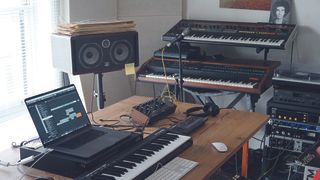
So once the demos were written, you went back to Melbourne and the band started fleshing out the tracks?
“We thought that coming back to Melbourne would make the most sense and heard about Park Orchards Studios. This guy had built a studio in the suburbs in his basement looking out across this beautiful eucalyptus forest. He’s also a crazy gear collector. We pooled some of our own equipment and just got stuck in recording. Half of the songs were still in sketch form - just a hint of what a song might be, and that was more interesting as we usually have a pretty good blueprint.”
It doesn’t sound like there’s a lot of guitar on the album, and the band has two guitarists. So was everyone experimenting with different instruments this time?
“Because we play live we have a fairly traditional band format – live bass, drums, guitar, and obviously my synths and vocals. This time we thought if there’s a moment for those things let’s capture it, if not we’ll let the songs guide us.
"That was part of the journey, so a lot of the time people were playing instruments they wouldn’t normally play, which meant there was more experimentation in terms of finding what sounds might suit the song instead of conforming to instruments we play when performing live.
"Some of the songs got solved by random gear choices - we’d turn something on in the morning and all of a sudden a song would go in a direction we didn’t expect and we’d follow that.”
The track Running in the Grass has some really strange percussion on it. What was used there?
“We used a bunch of VST instruments to create those sounds – Kontakt drums to create the rhythm and acoustic recordings to give a sense of something a little bit cold and abrasive. A lot of the VST instruments and effects have got so good I feel like something that once sounded inferior in the virtual world is now a level playing field. It’s about what works creatively and workflow-wise. You can have an idea bouncing around your head but might lose it by the time you’ve patched a cable or plugged some pedals in, so I’ll often dial stuff in using a VST.”
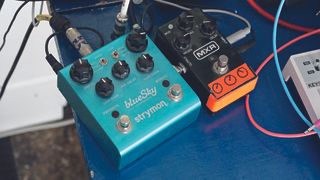
The album was mixed by Christoffer Berg. How would you differentiate his role from the co-producers you’ve typically used?
“I’ve got massive admiration for people who write, record and mix their own songs. The level of concentration you need to maintain perspective is like running a marathon and I start to lose my mind a little in the latter stages of recording and find mixing to be a bridge too far.
"Often these roles aren’t so clear cut because there are discussions at the mixing stage that also shape the songs a little bit, so we did our recording at Park Orchards, went through the arrangements, updated the demos and looked at a few options for mixing.
"Christoffer was our top choice based on his work with The Knife and Depeche Mode. He’s also done some film soundtracks, and as the music for this album is a bit more mood-driven and atmospheric we felt he’d have a good handle on that.”
When using a producer or mix engineer you might have a preconceived notion of what they will deliver, but is that instinct typically correct?
“In this case it turned out really well, but it’s often not exactly how you’d expect things to go. We worked with Tim Goldsworthy of DFA Records on one of our albums and a lot of the stuff we did sounded more like DFA than what he did on the album. In interviews we kept getting asked about how the album had that real ‘DFA sound’, and we’d be looking at each other thinking that was all our perspective and Tim was shooting for the complete opposite. That wasn’t a bad thing, but it shows how the balance of produce, mixer and artist is sometimes different to what you imagined going in.”
Is it right that the Neve console you used in Christoffer’s studio was the same one that had been used by artists like Bowie, Michael Jackson and Queen?
“The mixing was done at Christoffer’s Svenska Grammofon Studios in Gothenberg. He had this Neve console that was originally at Montreaux Studios, so yes Queen owned it for a while and Bowie and Eno worked on it when they were making Lodger.
"Ironically, it was always very unpredictable. We found various channels on the mixer would stop working for no particular reason, so even though it had this magical sound that was slightly annoying!”
The Cut Copy album Freeze, Melt is out now on Cutters Records.


Future Music is the number one magazine for today's producers. Packed with technique and technology we'll help you make great new music. All-access artist interviews, in-depth gear reviews, essential production tutorials and much more. Every marvellous monthly edition features reliable reviews of the latest and greatest hardware and software technology and techniques, unparalleled advice, in-depth interviews, sensational free samples and so much more to improve the experience and outcome of your music-making.


